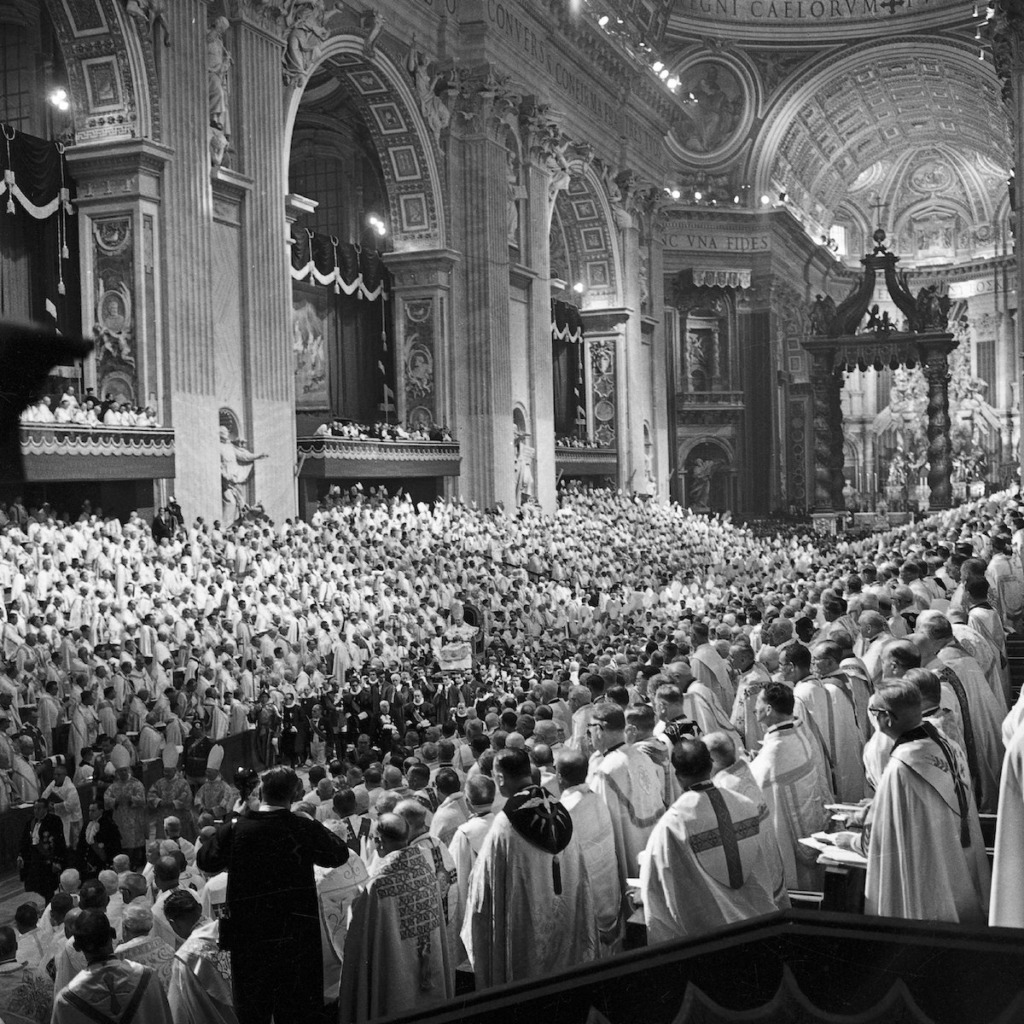In October, I received a copy of “To Sanctify the World: The Vital Legacy of Vatican II” (Basic Books, New York). Written by George Weigel, a distinguished senior fellow of the Ethics and Public Policy Center and theologian, who I know from my time in Washington and who addressed members of the legal profession at our diocese’s St. Thomas More Society dinner in 2019, this thoughtful and enlightening book provides the author’s reflections on the Second Vatican Council.
As I read it, I thought about the impact the council has had upon my life. Having been born four months before the council opened in 1962, I am truly a “child of Vatican II.” I made my First Communion in 1970, the year after the Roman Missal was published. The parish in which I grew up was building its church in 1962. The sanctuary was arranged in accord with the liturgical norms established in the Constitution on the Sacred Liturgy, and the parishioners expressed themselves as a faith community with the expectations that are part of parish life today.
My dad was involved in the Charismatic Renewal and was ordained to the permanent diaconate — the former was addressed in the Dogmatic Constitution on the Church and the latter was restored in that same document. As a priest, I worked with Cardinal James A. Hickey, who, as a priest, served as a peritus — a theological advisor to the council. I benefited from his insights about the work of the council and its implementation in subsequent decades.
Cardinal Hickey and St. Pope John Paul II shared a special bond. They were born six months apart, ordained priests six months apart and died six months apart. Each was immersed in the council — the latter as an auxiliary bishop and then as an archbishop. Their lives were filled with helping the faithful understand the changes that occurred as a result of the council and how, as shepherds, they incorporated them into the life of the Church.
They knew that the liturgical, theological and pastoral impact of the council was enormous. Unlike previous councils, which were often disciplinary, where there were anathemas and efforts to correct errors or difficulties of the past, Vatican II was aspirational. It highlighted the beauty of the faith and the ideals of our universal call to holiness. It promoted the ideal that we are to have a renewed proclamation — a new evangelization — in a modern world that is so secularized and agnostic.
Anytime there is a creative event in the life of the Church, there’s an element of uncertainty and a lack of clarity as these new things are occurring. One might think that 57 years after the closing of Vatican II, all the questions that arose during and after it would be answered, any ambiguities clarified. A quick look at the history of Church councils tells us that it can take many years for a council’s work to be fully understood and implemented.
Yet, the Church continues to respond appropriately to the inspiration of the Holy Spirit at Vatican II with renewed vigor, new tools, new methods and an ardor to live the life of discipleship and to bring the Good News to the modern world, especially as we face the challenges presented by the impact of technology that can lead us to ignore God when we are distracted by the secular and the material.
During the past 60 years, the pastoral life of the Church has been renewed on multiple levels. St. Pope John Paul II emphasized our call to sanctification, our need to be on the path to holiness. Pope Benedict XVI focused on the teaching of the Church and the continuity of that teaching. Pope Francis continues to speak about lives defined by charity and mercy, and about the need for pastoral engagement throughout the world. All of these are the fruit of the Second Vatican Council.

